-
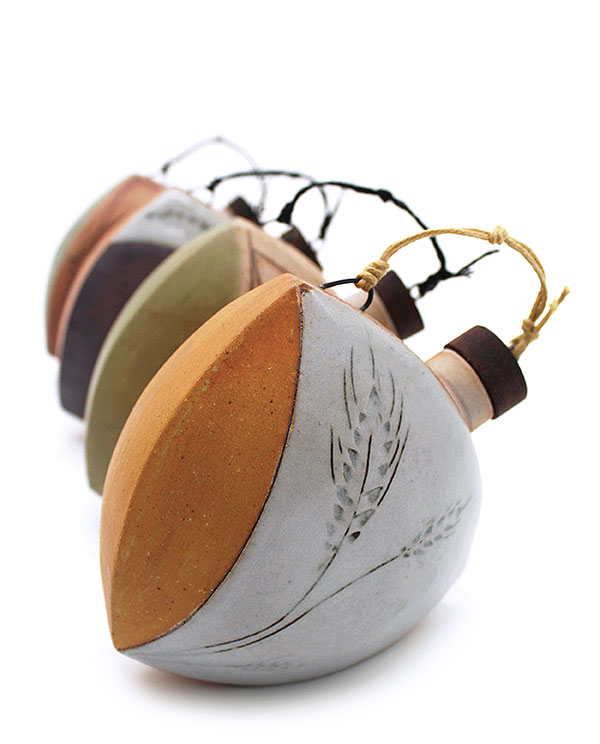 In the Potter's Kitchen: Press-Molded FlaskI delight in the intimate, sneaky, old-timeyness of a pocket flask. I think about them as having an individual personality, hiding in a purse or back pocket, and it makes me grin.
In the Potter's Kitchen: Press-Molded FlaskI delight in the intimate, sneaky, old-timeyness of a pocket flask. I think about them as having an individual personality, hiding in a purse or back pocket, and it makes me grin. -
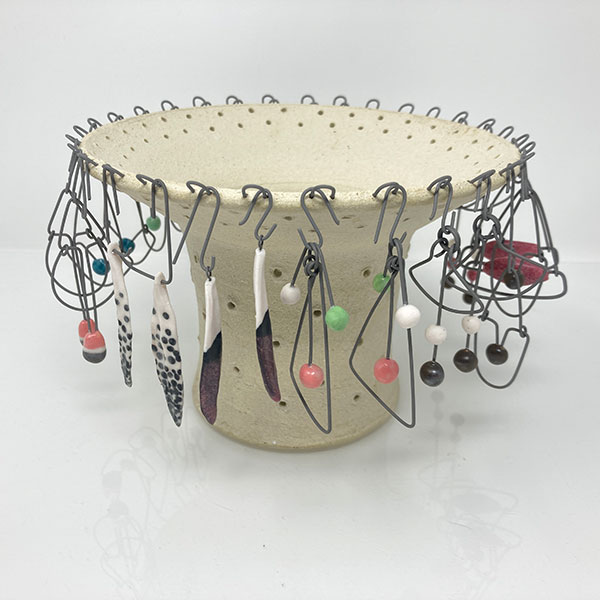 French ConnectionsJen Allen and Maia Leppo return to Pottery Making Illustrated to demonstrate a new collaborative technique for making beautiful ceramic jewelry in your own studio. Jen and Maia first appeared in the J
French ConnectionsJen Allen and Maia Leppo return to Pottery Making Illustrated to demonstrate a new collaborative technique for making beautiful ceramic jewelry in your own studio. Jen and Maia first appeared in the J -
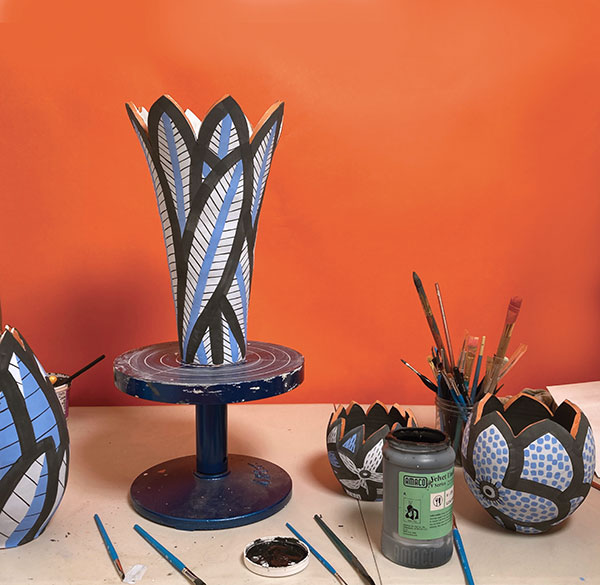 The Inseparable RelationshipMy work is an embodiment of the inseparable relationship among earth, body, and plant. I do not try to put this relationship into words or grasp this concept too tightly; so when I make vases and pots
The Inseparable RelationshipMy work is an embodiment of the inseparable relationship among earth, body, and plant. I do not try to put this relationship into words or grasp this concept too tightly; so when I make vases and pots -
 The Hummingbird Watering PitcherWorking in clay, a familiar method and style emerge that provide relatively accurate expectations of results. This is an important foundation for any ceramic artist. It can also be a jumping off point
The Hummingbird Watering PitcherWorking in clay, a familiar method and style emerge that provide relatively accurate expectations of results. This is an important foundation for any ceramic artist. It can also be a jumping off point -
 Making ScentsFor as long as I can remember, I have been a collector of all manner of things. To me, the smaller the object, the more appeal it has. As a little girl, one of my most loved collections featured minia
Making ScentsFor as long as I can remember, I have been a collector of all manner of things. To me, the smaller the object, the more appeal it has. As a little girl, one of my most loved collections featured minia -
 Japan in MindMy admiration for Oribe pottery, a love of Japanese rock gardens, a utility cover on a Tokyo street, and two surprises in the studio were the elements that converged to inspire my Tokyo bottles. From
Japan in MindMy admiration for Oribe pottery, a love of Japanese rock gardens, a utility cover on a Tokyo street, and two surprises in the studio were the elements that converged to inspire my Tokyo bottles. From -
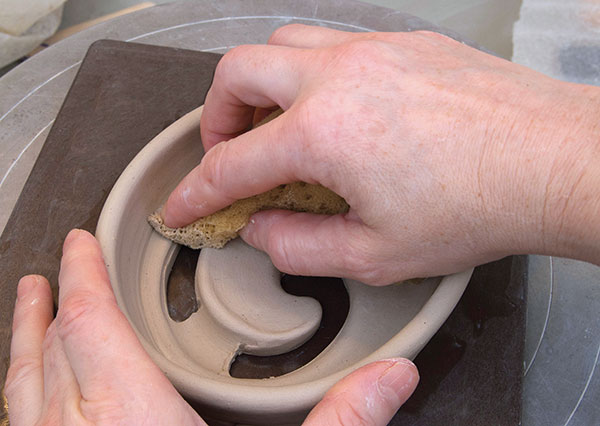 Soap Dish with a CatchOne of the wonderful things about making functional pottery is that the creative work of my hands becomes an intimate part of someone else’s daily life—what a joy! I also see one of my roles as a pott
Soap Dish with a CatchOne of the wonderful things about making functional pottery is that the creative work of my hands becomes an intimate part of someone else’s daily life—what a joy! I also see one of my roles as a pott -
 In the Studio: Getting Started with PorcelainPorcelain can be worked like other clays, but when fired can reach a state of extreme whiteness, becoming vitreous and often translucent, similar to glass. When tapped on, it has a ringing sound like
In the Studio: Getting Started with PorcelainPorcelain can be worked like other clays, but when fired can reach a state of extreme whiteness, becoming vitreous and often translucent, similar to glass. When tapped on, it has a ringing sound like -
 In the Studio: Working with GalleriesAs an artist, you might want to display your artwork at a gallery for an exhibition or on a consignment basis. Few artists sign agreements with the exhibiting gallery, relying on a bond of mutual trus
In the Studio: Working with GalleriesAs an artist, you might want to display your artwork at a gallery for an exhibition or on a consignment basis. Few artists sign agreements with the exhibiting gallery, relying on a bond of mutual trus -
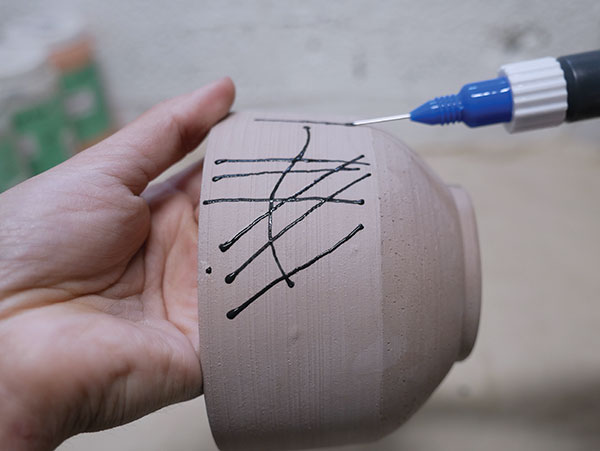 In the Studio: Coloring Before the LinesI love decorating pots with floral patterns outlined in sharp black line art. I used to spend hours unclogging trailing tips, stretching sore hands, and worrying about whether this line would be the o
In the Studio: Coloring Before the LinesI love decorating pots with floral patterns outlined in sharp black line art. I used to spend hours unclogging trailing tips, stretching sore hands, and worrying about whether this line would be the o -
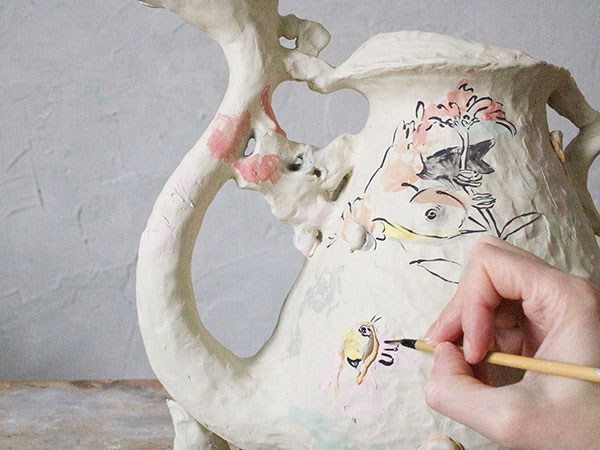 Editor's Note: Practicing DecisionsI am famous (or maybe notorious is more appropriate) for working on an idea in my sketchbook for so long that at some point, in my head, I feel like I have already made the piece, and I move on to ano
Editor's Note: Practicing DecisionsI am famous (or maybe notorious is more appropriate) for working on an idea in my sketchbook for so long that at some point, in my head, I feel like I have already made the piece, and I move on to ano -
 Pottery Illustrated: Inside OutOne of the most important steps in trimming and finishing a pot is to study the curve or line of its interior thrown form and mimic that shape on the exterior as you remove clay.
Pottery Illustrated: Inside OutOne of the most important steps in trimming and finishing a pot is to study the curve or line of its interior thrown form and mimic that shape on the exterior as you remove clay. -
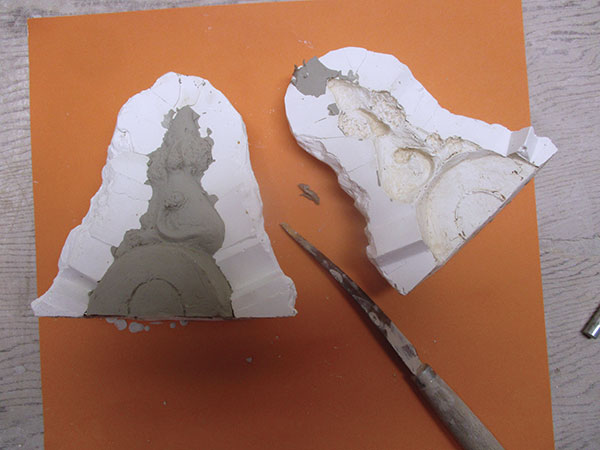 In the Potter's Kitchen: Working DogsNo more morning tennis, no more afternoon latte pick-me-ups, and less opportunities to peddle my ceramic work. Shelter-in-place requirements and limited gatherings have certainly altered my habitual r
In the Potter's Kitchen: Working DogsNo more morning tennis, no more afternoon latte pick-me-ups, and less opportunities to peddle my ceramic work. Shelter-in-place requirements and limited gatherings have certainly altered my habitual r -
 Collaborative Ceramic JewelryCeramic jewelry involves two components, a ceramic piece and a metal finding. Start by creating the ceramic element for the piece of jewelry you wish to make. A good beginning piece for anyone new to
Collaborative Ceramic JewelryCeramic jewelry involves two components, a ceramic piece and a metal finding. Start by creating the ceramic element for the piece of jewelry you wish to make. A good beginning piece for anyone new to -
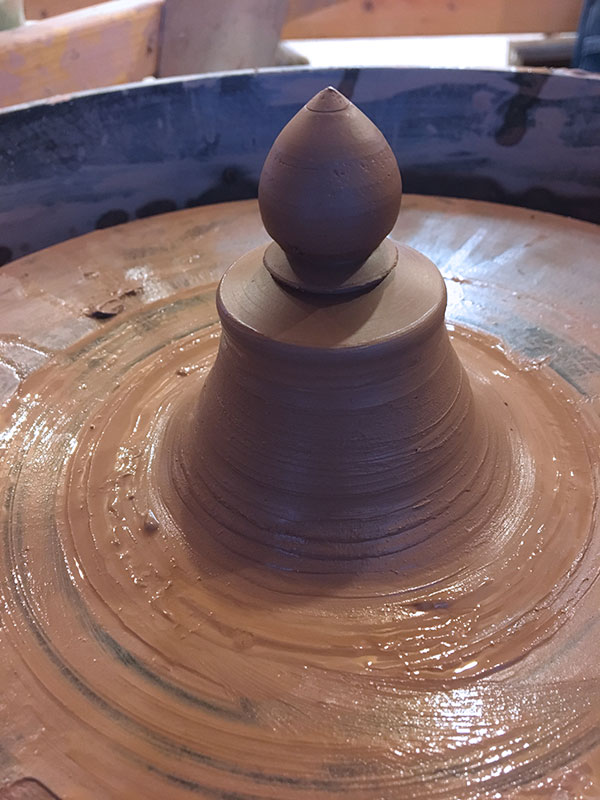 A Better Butter DishI’ve always loved the butter dish form, perhaps because of what’s hidden inside it. Throughout the years, I have occasionally tried to make butter dishes, but there was always something wrong with the
A Better Butter DishI’ve always loved the butter dish form, perhaps because of what’s hidden inside it. Throughout the years, I have occasionally tried to make butter dishes, but there was always something wrong with the -
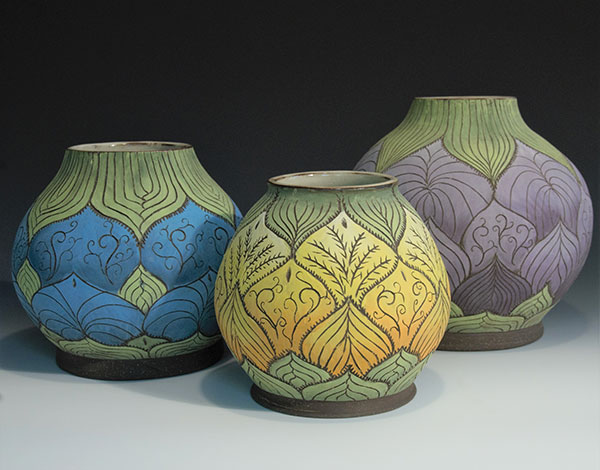 A Lotus LessonAs an ancient form of devotion and communication, they carry many meanings. While they are individually ephemeral, as a tradition they have endured for thousands of years. The following morning, the r
A Lotus LessonAs an ancient form of devotion and communication, they carry many meanings. While they are individually ephemeral, as a tradition they have endured for thousands of years. The following morning, the r -
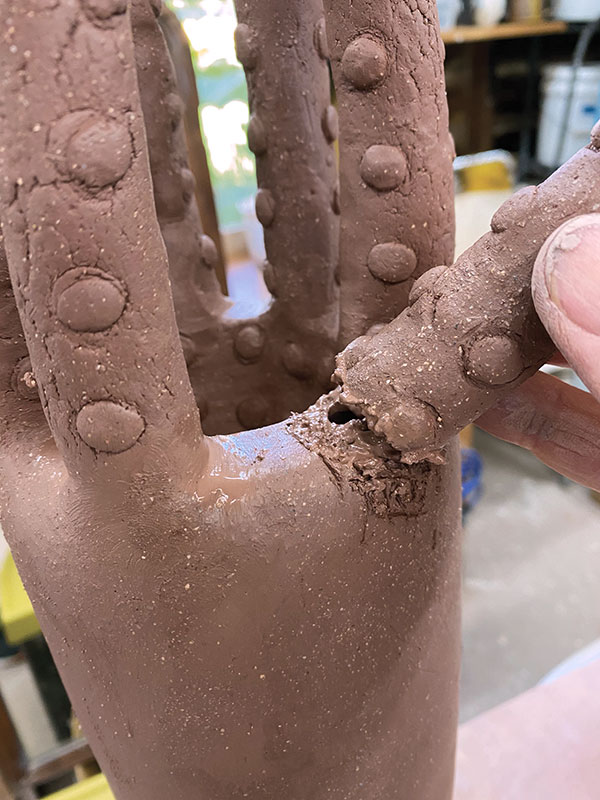 Inspired by NatureAs a fine arts major, I took a wide range of studio and art history classes, but never took a ceramics class. Later, as a graduate student in art education, I took a two-day workshop with Mary Carolyn
Inspired by NatureAs a fine arts major, I took a wide range of studio and art history classes, but never took a ceramics class. Later, as a graduate student in art education, I took a two-day workshop with Mary Carolyn -
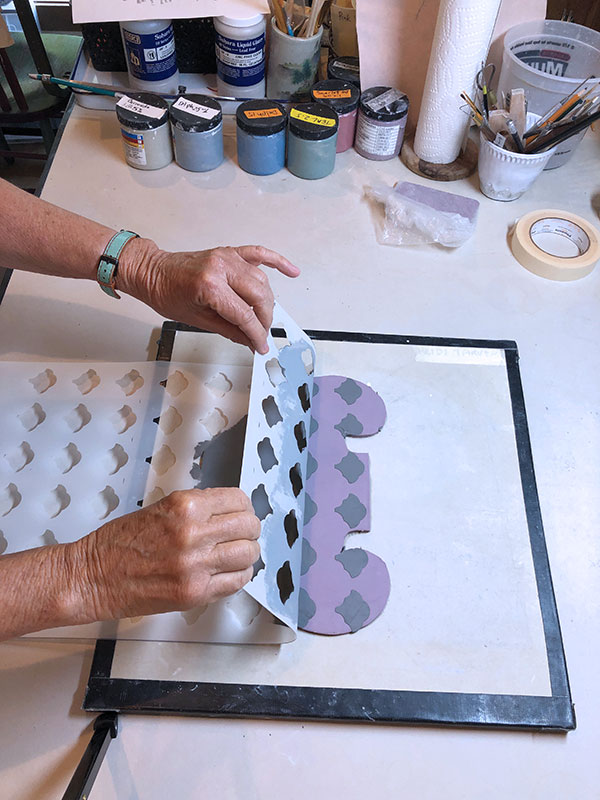 Stenciling on ClayMy creative process proceeds not from form to decoration, but in reverse. I start with the development of a graphic surface pattern, which I create and refine on my computer using Adobe Illustrator.
Stenciling on ClayMy creative process proceeds not from form to decoration, but in reverse. I start with the development of a graphic surface pattern, which I create and refine on my computer using Adobe Illustrator. -
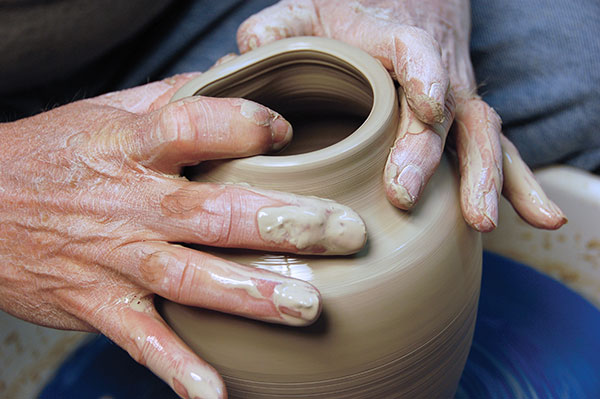 Throwing with TemplatesThis technique involves using templates to repeatedly create an even, symmetrical form. In the coil-building exercise, you position the template next to the pot as coils are added, making certain the
Throwing with TemplatesThis technique involves using templates to repeatedly create an even, symmetrical form. In the coil-building exercise, you position the template next to the pot as coils are added, making certain the -
 In the Studio: Keeping it CleanI have never felt good about having my clay space in the basement of our home. No matter how much time I spend cleaning up, I am still concerned about clay and chemical dust migrating to the rest of t
In the Studio: Keeping it CleanI have never felt good about having my clay space in the basement of our home. No matter how much time I spend cleaning up, I am still concerned about clay and chemical dust migrating to the rest of t
- «
- 11
- 12
- 13
- 14
- 15
- 16
- 17
- 18
- 19 (current)
- 20
- »
